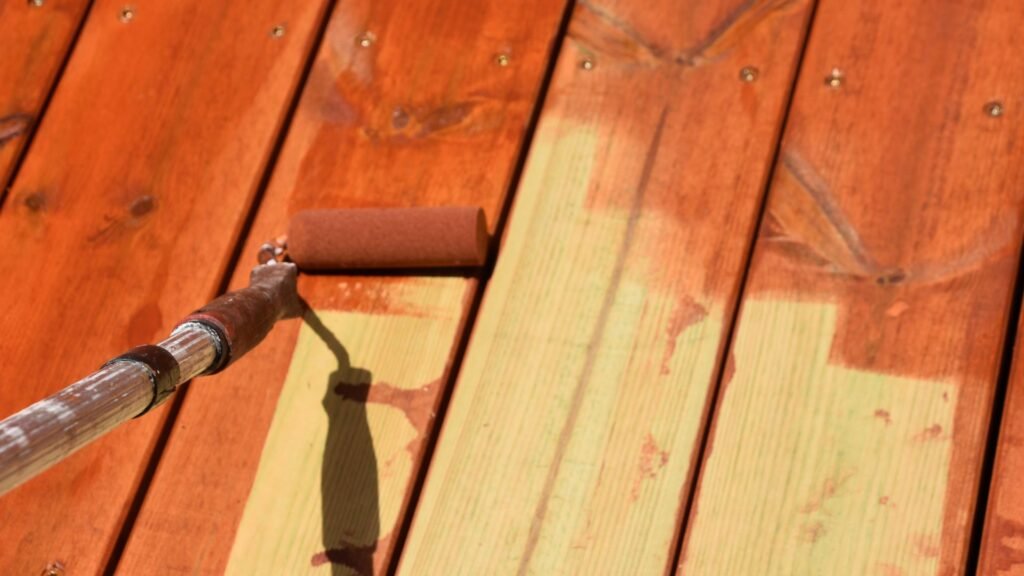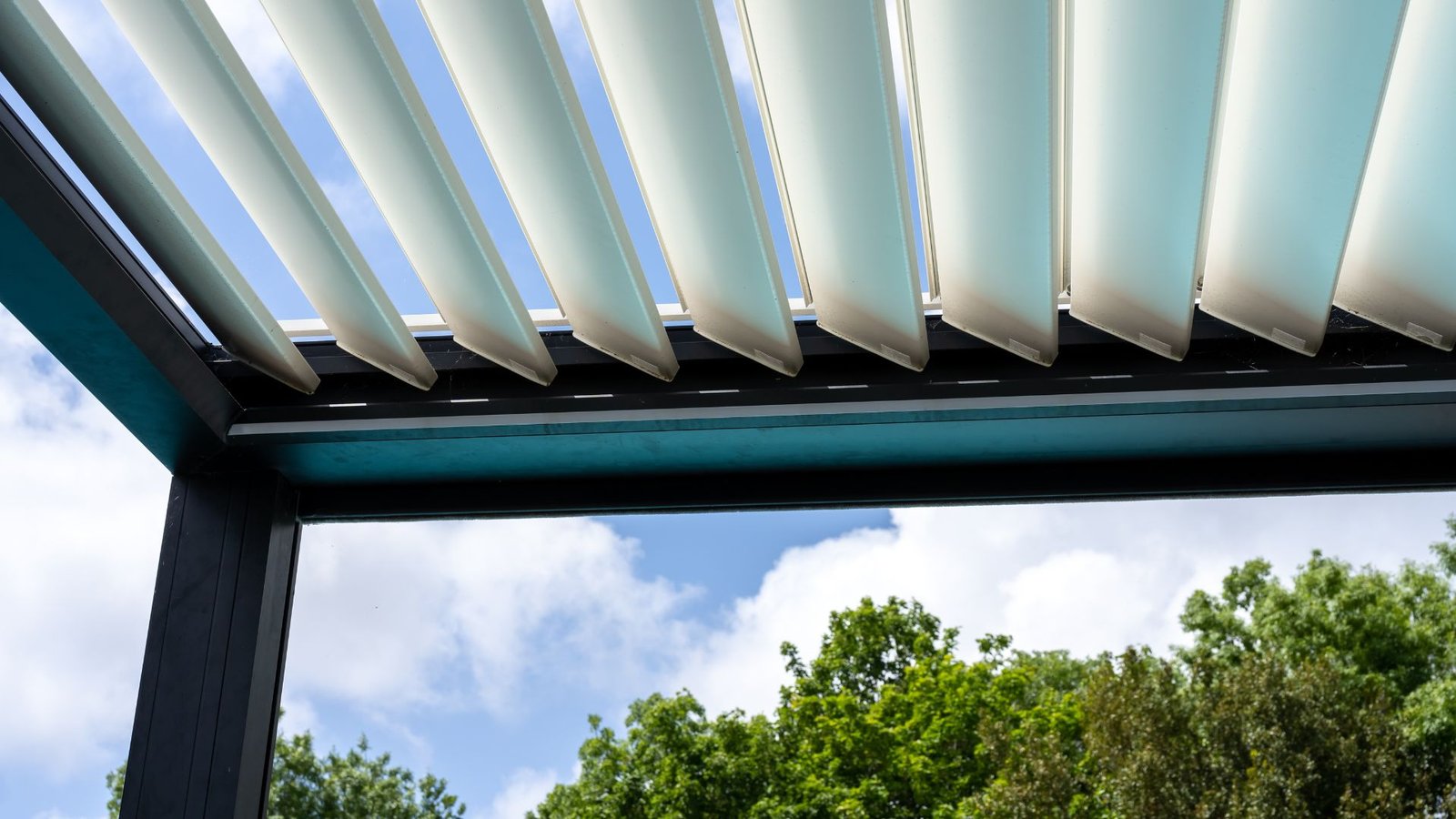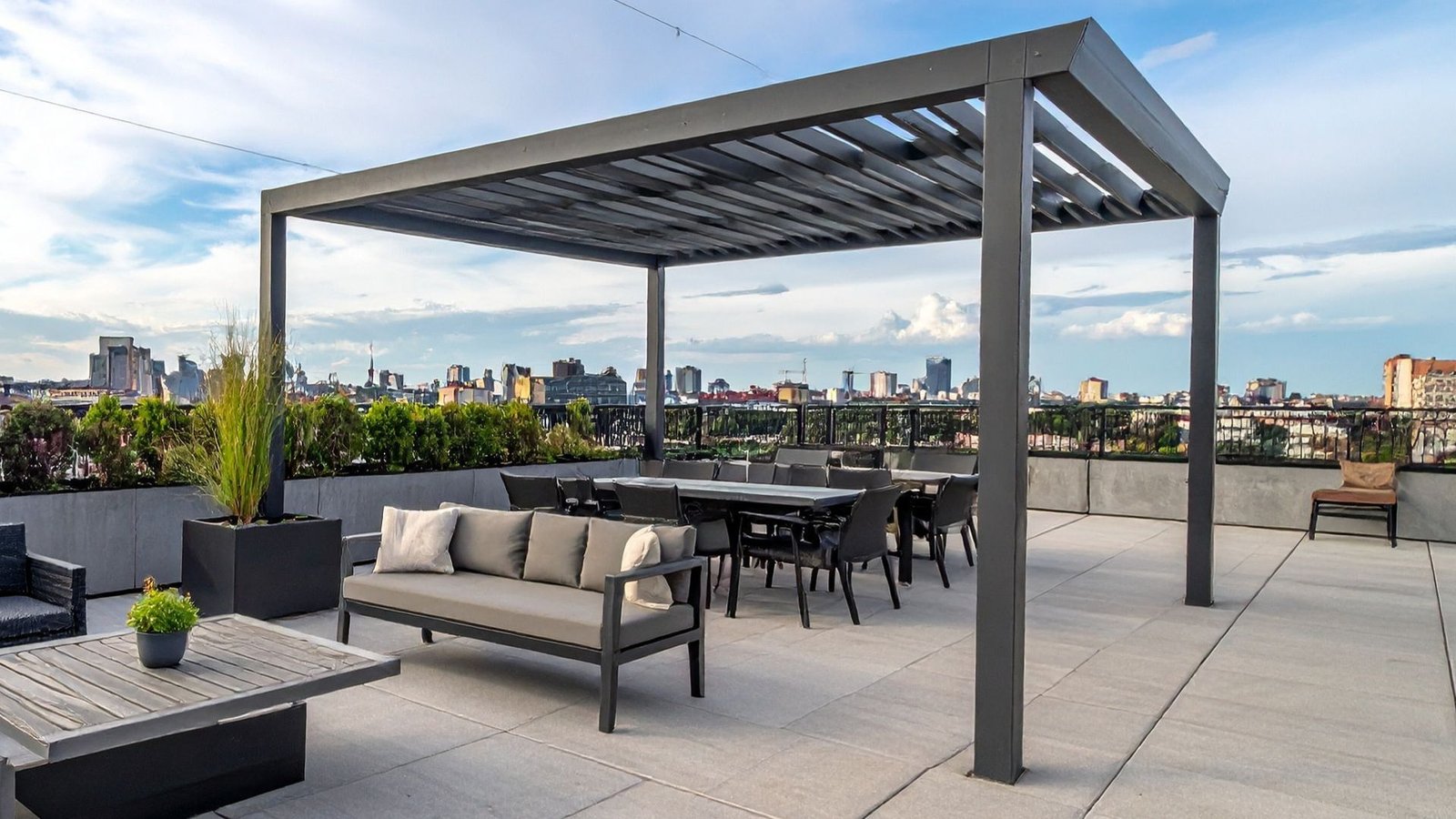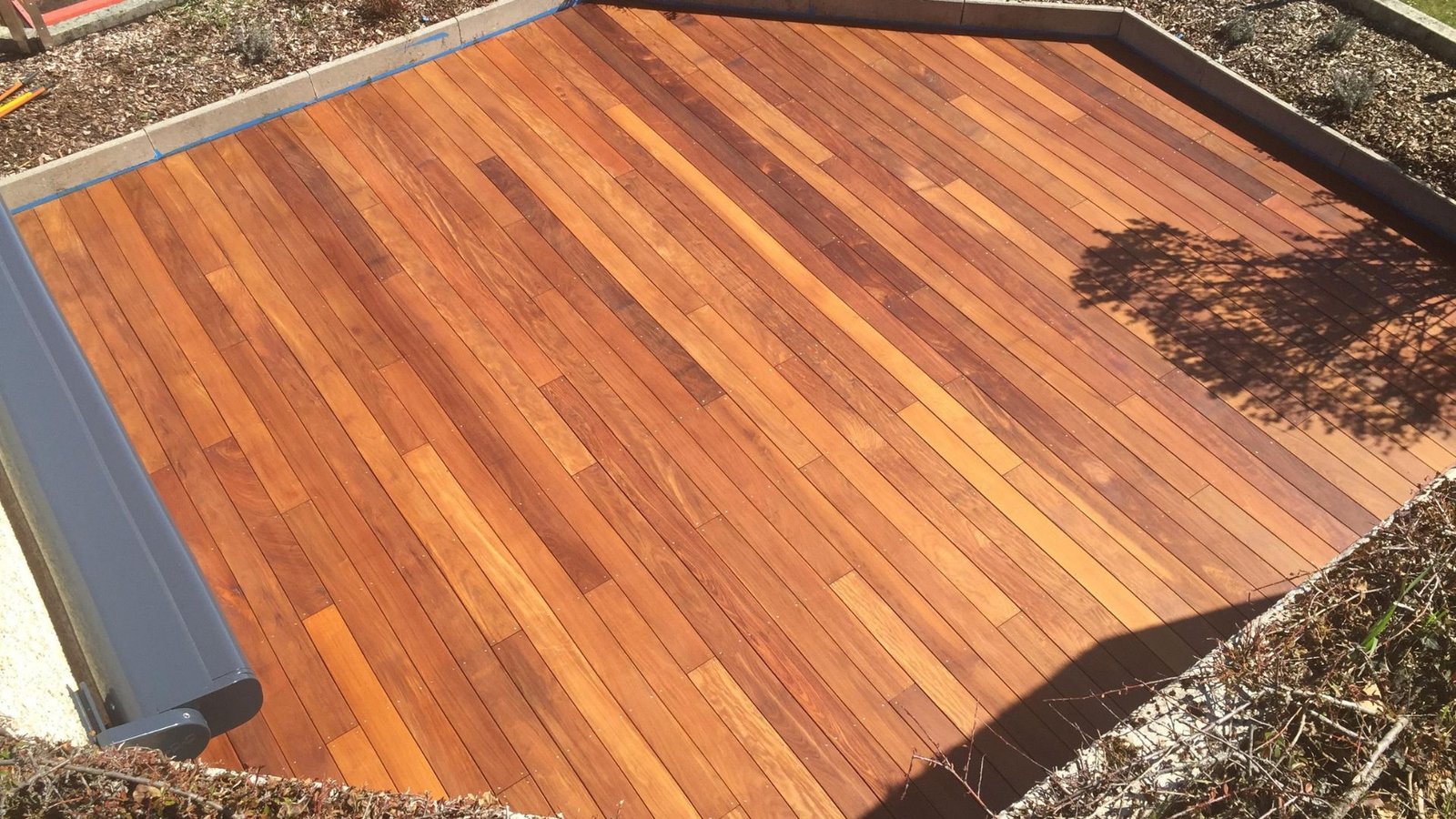Welcome to your go-to guide on how to paint decking in New Zealand! Painting your deck is not just a great way to refresh its look but also crucial for protecting it against the unique climate conditions here. From harsh sun to relentless rain, the right paint job can extend the life of your decking, enhance its appearance, and improve its resistance to the elements. In this article, we’ll cover everything from assessing the condition of your deck to the final touches of maintaining it. Whether you’re considering a vibrant new color or a necessary retouch, we’ll guide you through choosing the right materials, the painting process, and how to get professional-looking results. Let’s dive in and turn that old deck into a stunning outdoor highlight!
To paint your decking in New Zealand, start by choosing the right paint and color based on your deck’s material and exposure to elements. Prepare the deck by cleaning and sanding it to ensure smooth application. Use a high-quality brush or roller to apply paint evenly, and consider multiple coats for durability. Finish by sealing the deck to protect against weather and wear. Regular maintenance can extend the life and appearance of your deck, making it a beautiful addition to your outdoor space.
Table of Contents
Understanding The Basics Of Decking Material
When it comes to choosing the right decking material for your outdoor space, it’s crucial to consider the range of options available and how they align with your lifestyle, budget, and the climate in New Zealand. In this section, we’ll delve into the most popular decking materials in New Zealand, including pine, hardwood, and composite, explore the pros and cons of painting versus staining these materials, and provide practical tips to help you make the best decision for your decking needs.
Common Decking Materials in New Zealand
1. Pine
Pine is a widely chosen decking material in New Zealand due to its affordability and availability. It’s a softwood that is treated to resist rot, decay, and termites, making it a suitable option for many homes. However, pine is relatively soft compared to other woods, which means it can be prone to scratches and dents over time.
2. Hardwood
Hardwoods like kwila and vitex are popular for their durability and longevity. These materials are tougher than pine and can withstand harsh weather conditions, making them ideal for decking that needs to endure New Zealand’s varied climates. Hardwoods also offer a richer color palette and can provide a more upscale look to your outdoor areas.
3. Composite
Composite decking is made from a mix of wood fibers and recycled plastic. It is becoming increasingly popular due to its low maintenance requirements and consistent appearance. Composite decks are resistant to fading, staining, and scratching, and they do not require painting or staining. However, they are generally more expensive than wood options.
Painting vs. Staining Decking Materials
When finishing your deck, choosing whether to paint or stain the wood can impact both its aesthetic and lifespan. Here are some considerations:
Painting
Pros
- Provides a thick, protective coat that covers imperfections and offers more color options.
- Typically lasts longer than stain before needing a touch-up.
Cons
- May peel or crack over time, requiring more effort in surface preparation for reapplication.
- Can be slippery when wet, depending on the type of paint used.
Staining
Pros
- Enhances the natural beauty of the wood by penetrating deeply.
- Easier to apply than paint and allows the wood grain to show through.
Cons
- Generally requires more frequent reapplication than paint.
- Offers less UV protection compared to paint unless specifically formulated as a UV-protective stain.
Tips on Choosing the Right Material for Your Decking Needs
1. Consider the Climate: If you live in an area with high humidity or frequent rain, choose a material like composite that withstands moisture well. For sunny areas, hardwoods with natural UV resistance are ideal.
2. Think About Maintenance: Decide how much time and effort you are willing to invest in maintaining your deck. If you prefer a low-maintenance option, composite may be the best choice.
3. Budget Matters: Determine what you are willing to spend. While composite decks are pricier upfront, the long-term maintenance costs for pine might end up being higher.
4. Aesthetic Preferences: Consider what style complements your home. Paint offers a wide range of colors, while stain showcases the natural wood grain.
5. Longevity and Durability: For a long-lasting deck that can handle play, pets, and parties, hardwoods or composite materials are preferable.
By understanding the properties of each decking material, weighing the benefits of painting versus staining, and considering your specific needs and conditions, you can choose the perfect decking material for your home and enjoy your outdoor space for years to come.

Preparing To Paint Your Deck
Painting your deck can refresh your outdoor space, adding beauty and protection to an area that’s constantly exposed to the elements. But before you can begin transforming your deck with a new coat of paint, a bit of preparation is essential. From evaluating the current state of your deck to gathering the necessary tools and materials, and finally prepping the surface, here’s a comprehensive guide to get you ready for a successful deck painting project.
Evaluating Your Current Deck
1. How to Assess the Condition of Your Deck
The first step in preparing to paint your deck is to thoroughly assess its current condition. Look for any signs of wear and tear, such as splintered wood, peeling paint, or structural damages like loose boards. It’s also important to check for mold, mildew, and other signs of moisture damage, as these can affect the adhesion of your new paint. Use a screwdriver to probe for soft, spongy areas, a telltale sign of rot that needs addressing before painting.
2. Signs That Your Deck Needs a New Coat of Paint
Common indicators that your deck needs repainting include faded color, cracked or flaking paint, and the appearance of water stains. If the water beads up on the surface, the existing paint or sealant is still working; however, if water absorbs into the wood, it’s time to repaint to prevent further moisture damage.
Materials and Tools Needed
1. List of Materials and Tools Required
Before you start painting, make sure you have all the necessary materials and tools on hand. Here’s a list to help you prepare:
- High-quality deck paint or stain
- Primer (if needed, based on the type of paint and condition of the deck)
- Sandpaper or a power sander
- Paint brushes, rollers, and trays
- Painter’s tape
- Drop cloths or tarps
- Deck cleaner
- A hose or power washer for cleaning
2. Recommendations for the Best Tools and Materials for the Job
For the best results, choose a paint or stain specifically designed for deck use, which can handle fluctuations in temperature and humidity while providing protection against UV rays and moisture. A good-quality primer will help cover any dark colors or stains and provide a smooth foundation for the new paint. When it comes to tools, invest in brushes and rollers that are durable and suitable for use on rough surfaces to ensure even coverage and a smooth finish.
Prepping the Deck
1. Step-by-Step Guide on Cleaning and Preparing the Deck for Painting
Cleaning your deck thoroughly is crucial for the paint to adhere properly. Start by removing all furniture and fixtures from the deck. Sweep the surface clean of any debris, dust, or leaves. Next, wash the deck using a deck cleaner to remove dirt, grease, and mildew. For heavily stained areas, you might need to use a stiff brush to scrub these spots. Rinse the deck thoroughly with a hose or power washer, being careful not to damage the wood. Allow the deck to dry completely, which can take 24-48 hours, depending on weather conditions.
2. Importance of Weather Conditions in Painting Preparation
Ideal weather is a critical factor when planning to paint your deck. Opt for a dry day with moderate temperatures between 50°F and 90°F. Avoid painting in direct sunlight or when rain is expected within 24 hours after application. High humidity can slow down the drying process, while too much wind can cause debris to stick to the paint or stain.
By carefully preparing your deck for painting, you ensure not only a smoother application process but also longer-lasting results. Taking the time to assess, clean, and prepare your deck properly will transform your outdoor space into a vibrant, welcoming area for relaxation and entertainment.
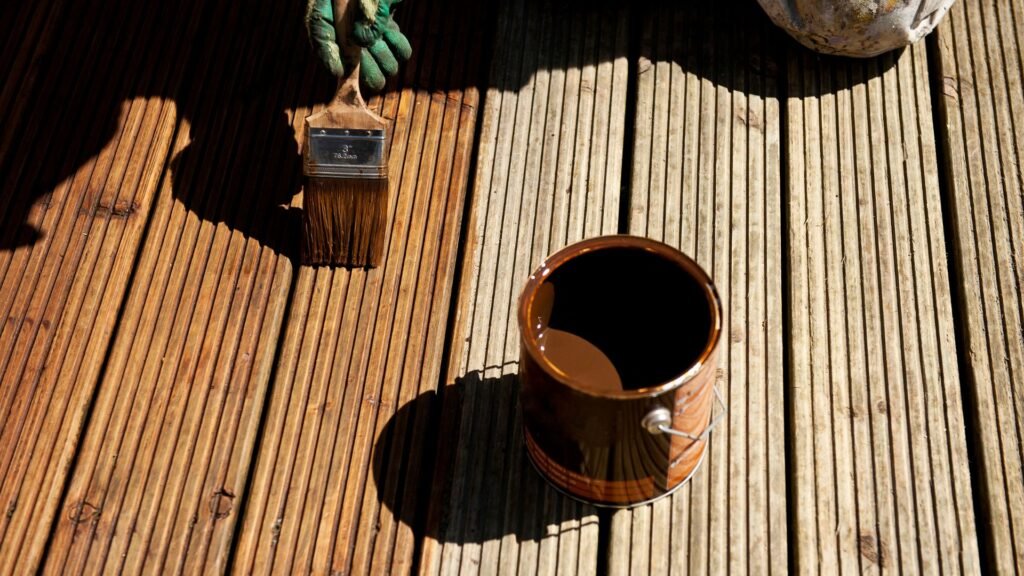
Choosing The Right Paint And Color
When it comes to enhancing the appearance and durability of your deck, the choice of paint and color plays a pivotal role. Not only does the right paint protect your deck from the elements, but it also adds a visual appeal that can complement your home’s exterior. This section will guide you through selecting the perfect type of paint, choosing a color that suits your surroundings, and recommending the best brands available in New Zealand.
Types of Deck Paints
Deck paints are primarily categorized into two types: oil-based and water-based. Each type has its specific advantages depending on your deck’s material and your maintenance preferences.
- Oil-Based Paints: Known for their durability and resistance to wear and tear, oil-based paints are a solid choice for decks that face high foot traffic or harsh weather conditions. They penetrate deeply into wood, offering enhanced protection and a longer-lasting finish. However, they take longer to dry and can emit strong odors during application.
- Water-Based Paints: These paints are environmentally friendly and easier to clean up, requiring only soap and water. Water-based paints dry faster and are less prone to yellowing over time compared to their oil-based counterparts. They’re ideal for homeowners looking for a practical solution that offers a wide range of color options and easier maintenance.
Selecting the Right Color
Choosing the right color for your deck should be a thoughtful process, as it not only impacts the aesthetics but also the functionality of your outdoor space.
- Considerations for Choosing Colors: Think about the amount of sun exposure your deck receives. Lighter colors tend to reflect sunlight, keeping the deck cooler, which is beneficial in sunnier areas. Additionally, consider the color of your house. Choosing a deck color that complements your home’s exterior can create a cohesive look.
- Popular Decking Colors in New Zealand: Neutral colors like greys and browns are popular as they offer a natural, timeless look that blends seamlessly with outdoor environments. For those looking to make a statement, darker hues such as black or navy can serve as bold, contemporary choices that contrast beautifully against green landscapes.
Best Brands and Where to Buy Them in NZ
When it comes to purchasing deck paint, quality should never be compromised. Here are some reliable brands and shopping tips:
- Recommended Brands: Resene, Dulux, and Wattyl are highly regarded for their quality and range of suitable outdoor paint products. These brands offer products specifically formulated to withstand New Zealand’s unique climate conditions.
- Where to Buy: You can find these paints at local hardware stores or home improvement centers like Bunnings Warehouse and Mitre 10. Additionally, many brands offer online purchasing options with delivery, which can be a convenient alternative to in-store shopping.
Choosing the right paint and color for your deck is crucial for ensuring both its longevity and aesthetic appeal. By considering the types of paints available and selecting a color that harmonizes with your home and environment, you can enhance the overall look and feel of your outdoor space. With trusted brands and convenient buying options in New Zealand, your deck can become a welcoming extension of your home.
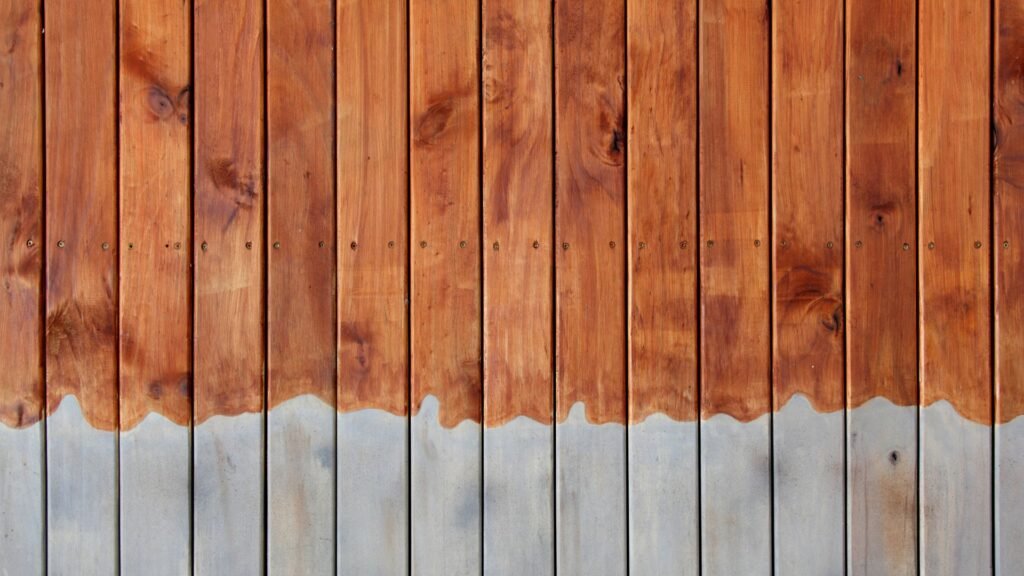
The Painting Process
When it comes to giving your deck a fresh look, the painting process can be both enjoyable and rewarding. Whether you’re aiming to revitalize an old deck or protect a new one, following a detailed step-by-step guide and mastering some key painting techniques can make all the difference. Here’s how to achieve a professional finish that not only looks great but also lasts.
Step-by-Step Guide to Painting Your Deck
Painting your deck can seem daunting, but with careful preparation and a systematic approach, you can easily give your deck a beautiful and durable finish. Here’s a detailed guide to help you through the process:
1. Preparation: Start by preparing your deck. This involves cleaning the deck thoroughly with a deck cleaner to remove any dirt, grease, mildew, or previous paint that might prevent adhesion of the new coat. Allow the deck to dry completely after cleaning.
2. Repair and Sanding: Inspect the deck for any loose nails, splinters, or damaged boards. Make necessary repairs or replacements, then sand the deck smoothly to ensure an even surface, which will help the paint adhere better.
3. Priming: Applying a primer is crucial, especially if your deck has not been painted before or if you are changing the color drastically. Primer helps in providing a smooth base and enhances the durability of the paint job.
4. Choosing Paint: Select a paint that is suitable for deck use, ensuring it can withstand the outdoor elements and foot traffic. Deck paints are usually thicker than regular exterior paints and often come with a non-slip finish.
5. Painting: Begin painting from the furthest corner of the deck and work your way towards an exit point to avoid painting yourself into a corner. Use a long-handled roller for larger surfaces and a brush for edges and tighter spots.
6. Drying: Allow the first coat to dry thoroughly, based on the manufacturer’s instructions, before applying the second coat if necessary.
7. Final Touches: Check for any missed spots or touch-ups. Once the final coat is dry, you can replace furniture and enjoy your newly painted deck.
Techniques and Tips for a Professional Finish
Achieving a professional finish when painting your deck involves not just patience and precision, but also knowing a few insider tips and techniques:
- Brush vs. Roller: Choosing between a brush and a roller depends on the size of your deck and the finish you desire. Brushes are great for areas that require more detailed work and edges, while rollers can cover large, flat areas more quickly and evenly. For best results, you might find using both tools beneficial: a roller for the main surface and a brush for the edges and corners.
- Ensuring Even Coverage: To ensure even coverage, start with a loaded roller or brush and apply the paint in long, continuous strokes. Overlap your strokes slightly to avoid missed spots. Always maintain a wet edge by extending your strokes into the wet paint you just applied, which helps prevent lap marks.
- Avoiding Drips: When using a brush, dip only about one-third of the bristles into the paint to avoid overloading it, which can lead to drips. When using a roller, use a moderate amount of paint, and roll it back and forth in the tray to remove excess paint.
- Use of Painter’s Tape: Use painter’s tape along the edges of the deck where it meets the house or around any areas you do not want to paint. This helps achieve sharp, clean lines and keeps your work looking professional.
- Regular Maintenance: Once your deck is painted, regular maintenance is key to keeping it looking great. Clean it seasonally and touch up any areas where the paint appears to be lifting or chipping away.
By following these detailed steps and techniques, you can ensure your deck not only looks spectacular but also stands up well against the elements and wear over time. Happy painting!
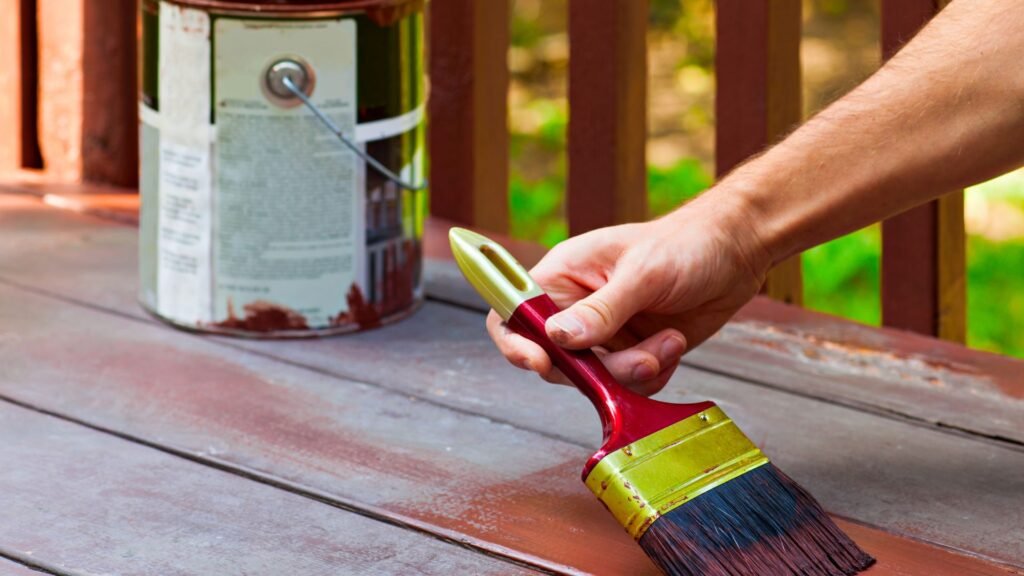
Maintenance And Care
Maintaining a beautifully painted deck enhances your outdoor living space while protecting your investment. Here are expert tips on how to keep your deck looking fresh, guidelines on when to repaint or touch up, and solutions for tackling common problems such as fading, peeling, and mold growth.
Tips on Maintaining Your Painted Deck
Keeping your painted deck in tip-top condition involves regular maintenance to prevent wear and tear. Here’s how you can ensure your deck stays vibrant and durable:
1. Regular Cleaning: Sweep your deck weekly to remove dirt and debris that can scratch the paint. For a deeper clean, use a mild soap and water solution with a soft brush to avoid damaging the paint surface. Rinse thoroughly with water.
2. Immediate Stain Removal: Address spills and stains immediately to prevent them from setting in. Use a gentle cleaning solution appropriate for painted surfaces. Avoid harsh chemicals that can strip the paint.
3. Sunlight Protection: Prolonged exposure to direct sunlight can cause the paint to fade. Consider using outdoor rugs or UV-protective sealants to shield areas that get a lot of sun.
4. Furniture Pads: Place protective pads under patio furniture to prevent scratches and peeling from constant contact and movement.
How Often to Repaint or Touch Up Your Deck
The frequency of repainting or touching up your deck depends on several factors including climate, the quality of the previous paint job, and how much foot traffic your deck receives. Generally, a well-maintained painted deck will need a new coat every 3 to 5 years. However, annual touch-ups might be necessary in areas that experience harsher weather conditions or more frequent usage.
- Inspect Your Deck Annually: Check for signs of wear such as chipping, fading, or peeling paint. These indicators can help you decide whether a touch-up or a full repaint is necessary.
- Choose the Right Time to Repaint: The best time for repainting your deck is during dry, mild weather conditions. This ensures that the paint adheres well and dries evenly.
Dealing with Common Issues: Fading, Peeling, and Mold Growth
Here are strategies to manage the most common issues that can affect a painted deck:
1. Fading: Fading is primarily caused by UV exposure. Using paints with UV inhibitors can significantly reduce fading. If fading occurs, a fresh coat of paint can restore the original color vibrancy.
2. Peeling: Peeling often results from moisture intrusion or improper surface preparation before painting. Ensure that your deck is completely dry and properly sanded before applying paint. Use high-quality exterior paints designed for deck use to prevent peeling.
3. Mold and Mildew Growth: Decks in humid or shaded areas are prone to mold and mildew. Regularly cleaning your deck with a mold inhibitor can prevent growth. If mold appears, treat it with a solution of 1 part bleach to 3 parts water, scrubbing gently before rinsing off.
Regular maintenance extends the life and beauty of your painted deck. By following these tips and addressing issues promptly, you can enjoy a pristine, welcoming outdoor space for many years. Whether you’re performing routine cleaning or undertaking a full repaint, each step you take helps preserve the aesthetic and functional quality of your deck.

DIY Vs. Hiring A Professional
Deciding whether to tackle deck painting yourself or to hire a professional is a significant choice that homeowners face. Each option has its merits and downsides, influenced by factors such as cost, time, skill level, and desired outcome. Understanding these aspects can help you make an informed decision that aligns with your needs and budget.
Pros and Cons of DIY Deck Painting vs. Hiring a Professional
DIY Deck Painting
Pros
- Cost Savings: One of the most compelling reasons to DIY is the potential cost savings. By handling the project yourself, you can avoid labor costs, which are a substantial portion of professional service fees.
- Satisfaction and Control: Completing a deck painting project on your own can provide a sense of accomplishment and allows for complete control over the process, from selecting materials to choosing the exact shade of paint.
Cons
- Time and Effort: Deck painting is time-consuming and physically demanding. It requires significant preparation, including cleaning, sanding, and possibly repairing parts of the deck.
- Quality and Longevity: Without professional tools and techniques, it might be challenging to achieve a high-quality finish. This can affect the look and durability of your deck.
Hiring a Professional
Pros
- Expertise and Efficiency: Professionals bring experience, which translates into faster completion and high-quality results. They have the tools and know-how to tackle any issues that arise during the project.
- Warranty and Peace of Mind: Many contractors offer a warranty on their work, providing added assurance about the durability of the paint job.
Cons
- Higher Cost: Professional services come at a higher price due to labor and expertise costs.
- Less Personal Involvement: While you can choose the paint color and finish, much of the project will be out of your hands, which might be a downside if you enjoy being involved in home improvement tasks.
How to Find and Choose a Reputable Contractor in New Zealand
Finding a reliable contractor is crucial for ensuring the success of your decking project. Here are steps to locate and select a reputable professional in New Zealand:
1. Ask for Recommendations: Start by asking friends, family, or neighbors who have recently undertaken similar projects for contractor referrals.
2. Check Online Reviews: Platforms like NoCowboys and Builderscrack are popular in New Zealand for finding and reviewing local contractors. Look for professionals with high ratings and positive feedback.
3. Verify Credentials: Ensure the contractor is licensed and insured. This protects you from liability and assures that they meet the local regulations and industry standards.
4. Get Multiple Quotes: Contact several contractors to get quotes. This will give you a better idea of what the market rates are and what services are included.
5. Interview Candidates: Don’t hesitate to ask potential contractors about their experience, approach to potential challenges, and previous work samples.
Cost Comparison: DIY Expenses vs. Professional Services
DIY Expenses
- Materials: These can include paint, primer, brushes, rollers, and protective gear. Costs will vary depending on the quality and type of materials selected.
- Tools: Some tools may need to be purchased or rented if you don’t already own them, which can add to the cost.
Professional Services
- Labor Costs: This is typically the bulk of the expense when hiring professionals. It reflects the skill and time required to complete the job.
- Materials and Tools: Professional quotes generally include these costs, and professionals often have access to higher-quality materials at a better rate due to industry connections.
In conclusion, whether to DIY or hire a professional for deck painting depends on your priorities, skills, and budget. If you value precision and quality and can afford it, hiring a professional is advisable. However, if you are on a tight budget and have the time and inclination to learn, tackling the project yourself can be a rewarding experience. By carefully weighing these considerations, you can ensure that your deck looks great and serves you well for years to come.

FAQs: About How To Paint Decking NZ
What is the best time of year to paint decking in New Zealand?
The best time to paint decking in New Zealand is during the spring or early autumn when the weather is mild and there is less likelihood of rain or extreme temperatures that can affect the drying process.
How do I know if my deck needs repainting?
Signs that your deck may need repainting include noticeable fading of the color, peeling or flaking paint, and water no longer beading on the surface, indicating that the waterproof seal may have worn off.
Can I paint over old paint, or do I need to strip it first?
It is possible to paint over old paint if it’s still in good condition; just ensure the surface is clean and properly prepared. If the old paint is peeling or flaking, it’s best to strip it first to achieve a smoother, more durable finish.
What type of paint is best for decking?
For decking, water-resistant exterior paints are best, preferably those that are formulated specifically for decking. Oil-based paints are durable and good for high-traffic areas, while water-based paints are easier to clean up and quicker to dry.
How many coats of paint are necessary?
Typically, two coats of paint are recommended. The first coat acts as a primer and sealer, and the second coat provides color depth and surface protection. Allow the first coat to dry completely before applying the second coat.
Do I need to use a primer before painting my deck?
Using a primer is advisable, especially if you are changing the color of your deck or painting over bare wood. Primer helps in providing a uniform surface that enhances paint adhesion and increases the durability of the paint job.
What tools do I need to paint my deck?
Essential tools include a paintbrush, roller, or a sprayer for larger decks, sandpaper or a sander, a cleaner, and possibly a paint scraper or heat gun if you need to remove old paint.
How do I maintain my painted deck?
Regular cleaning and immediate repair of any chips or cracks can help maintain your painted deck. It’s also a good idea to reseal the deck every few years to protect against moisture and wear.
What should I do if the paint starts peeling off my deck?
If the paint begins to peel, it is often a sign of moisture issues or poor adhesion. Remove the peeling paint, sand the area to smooth it, ensure it’s dry and free of contaminants, and then repaint using a suitable exterior deck paint.
Is it better to paint or stain a deck?
The choice between painting and staining a deck depends on the look you want to achieve and the amount of maintenance you’re willing to perform. Paint offers more color choices and a thicker protective layer, but it can peel and require more upkeep. Stain penetrates deeper into the wood, offering a more natural look with less maintenance but typically provides less UV protection.
Conclusion
In wrapping up our discussion, it’s essential to revisit the crucial insights we’ve shared that can significantly bolster your project’s success. We’ve equipped you with a robust set of strategies and practical advice designed to navigate the challenges and optimize your outcomes effectively. Whether you’re a seasoned professional or embarking on a new venture, the guidance offered here should empower you with the confidence to move forward. By integrating these proven tips into your planning and execution, you’re not just prepared; you’re setting the stage for remarkable achievements in your endeavors. Take these lessons to heart, and approach your project with assurance and the readiness to excel.
About the Author:
Mike Veail is a recognized digital marketing expert with over 6 years of experience in helping tradespeople and small businesses thrive online. A former quantity surveyor, Mike combines deep industry knowledge with hands-on expertise in SEO and Google Ads. His marketing strategies are tailored to the specific needs of the trades sector, helping businesses increase visibility and generate more leads through proven, ethical methods.
Mike has successfully partnered with numerous companies, establishing a track record of delivering measurable results. His work has been featured across various platforms that showcase his expertise in lead generation and online marketing for the trades sector.
Learn more about Mike's experience and services at https://theleadguy.online or follow him on social media:

